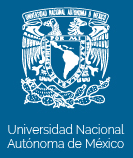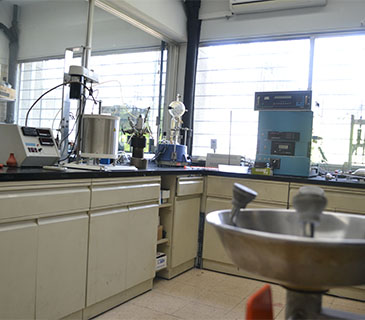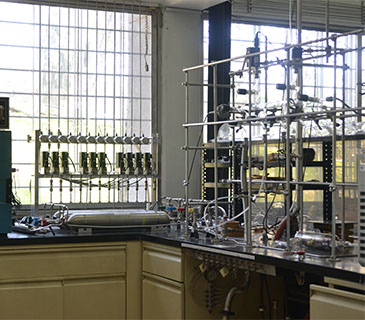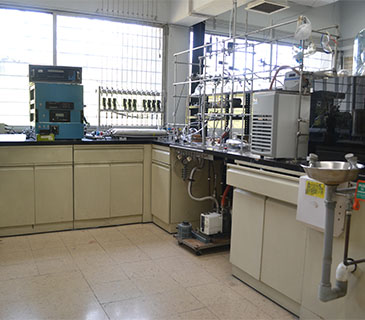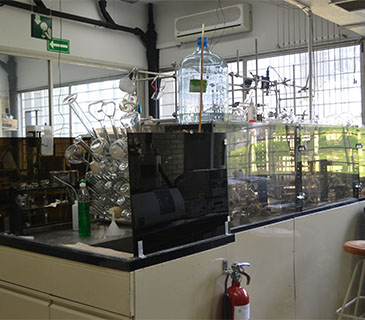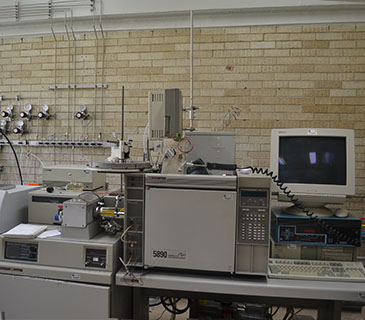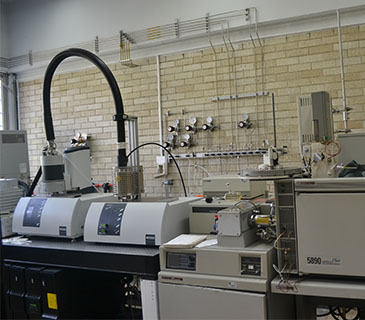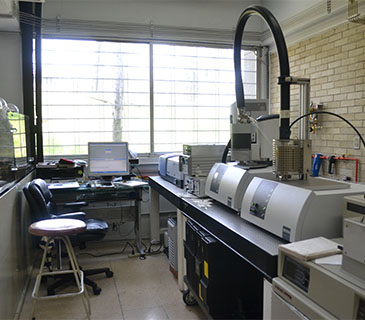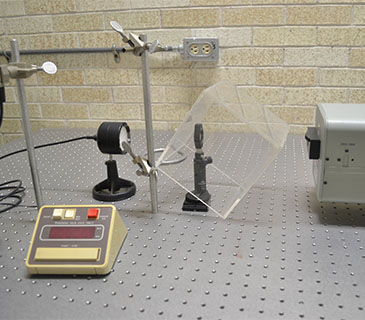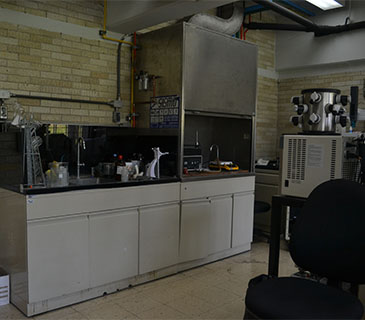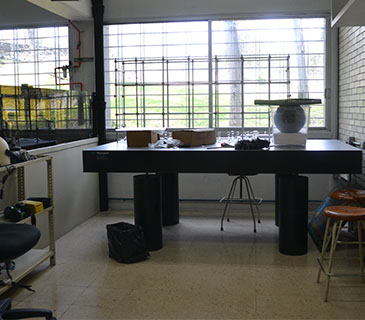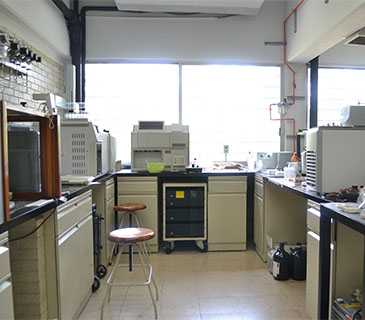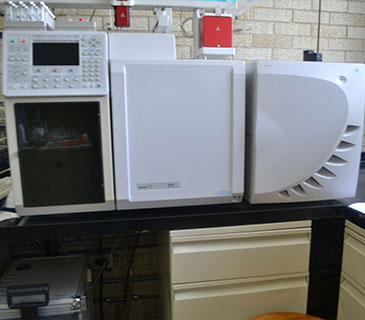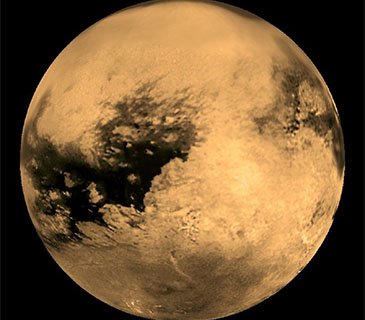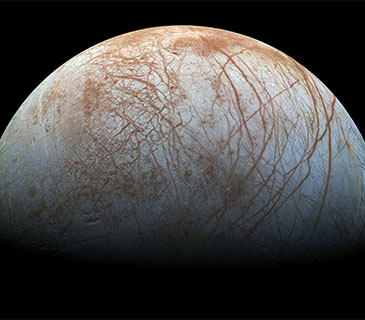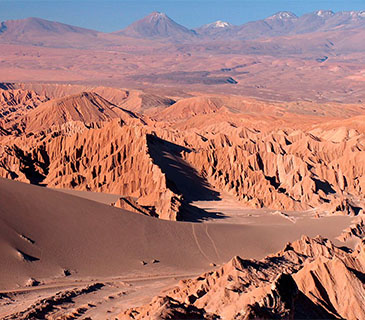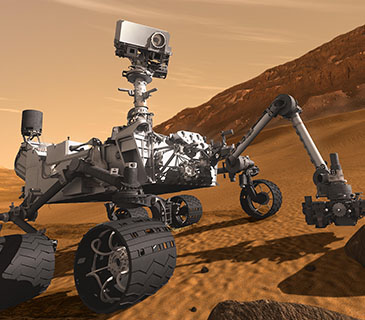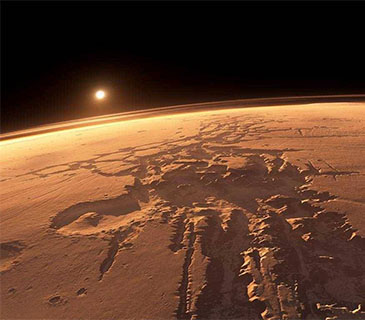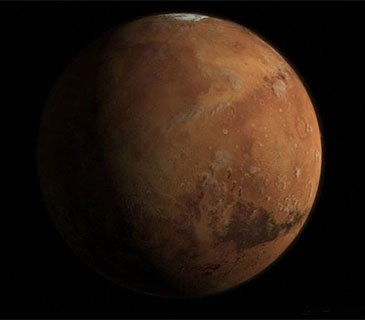Dr. Rafael Navarro Unit of Laboratories
Head of the laboratory: Dr. Jorge Armando Cruz Castañeda
jorge.cruz@nucleares.unam.mx
Member:
Researchers: Dr. Jorge Armando Cruz Castañeda
Technicians: M.Sc. José Guadalupe de la Rosa Canales,
M.Sc. Paola Molina Sevilla
Contact:
Dr. Jorge Armando Cruz Castañeda
jorge.cruz@nucleares.unam.mx
Phone: +(52) (55) 5622 4664
Research Lines
Laboratory Infrastructure
- A Linde model FM-4660 gas mixer with mass flow controllers capable of preparing mixtures in percentages greater than 2%. The available gases are Air, N2, O2, CO2, CO, CH4, He, Ar, and NH3.
- A vacuum line with vacuum and pressure gauges, and a pneumatic safety system.
- A half-liter stainless steel Parr reactor capable of withstanding temperatures up to 500°C and pressures up to 5000 bar, the reactor is suitable for introducing gas atmospheres into it.
- An Agilent Technologies model 7890A gas chromatograph for the analysis of gases, liquids, and solids. For the analysis of solids, the chromatograph is coupled to a pyrolyzer. The chromatograph is equipped with two columns: one for the analysis of gases and hydrocarbons from C1-C8, and another for the analysis of organic molecules greater than C6. The detection system is an Agilent Technologies model 5975C quadrupole mass detector (Triple Axis). This detector operates in chemical ionization and electronic impact modes.
- A Varian model 4000 gas chromatograph, with two capillary injectors, both Split-Splitless, a valve to choose column, a loop for gas sampling, equipped with an ion trap mass spectrometer, this detector operates in chemical ionization and electronic impact.
- A Varian model CP-4900 portable gas chromatograph with two independent gas sample inlets, is equipped with two carrier gas cylinders and five independent analysis modules with thermal conductivity detectors, positive and negative chemical ionization, positive hybrid chemical ionization, and negative and selective ion.
- A Continuum Sureline pulsed Nd:YAG laser capable of emitting 600 mJ per pulse, to generate plasmas of more than 30,000°C to simulate lightning, corona discharges, and shock waves due to impact phenomena.
- A Jupiter model Netzsch thermal analyzer to perform simultaneous DSC/TGA measurement at normal pressure and reduced pressure up to 30 mbar in controlled atmospheres. The gases/vapors resulting from thermolysis can be analyzed with a Bruker model Tensor 27 Fourier transform infrared spectrometer or with a Netzsch mass spectrometer model Aeolos. The thermal analyzer is equipped with two ovens to perform analysis, one from -150 to 1000°C and the other from 30 to 1500°C.
- A dual beam UV-vis spectrophotometer with an operating range of 190 to 1100 nm.
UNAM COMMUNITY
- Office for the Defense of University Rights
- UNAM Emergency: 56160914 ó 56220140
- PUMA Reaction: 56226464 ext 26464
